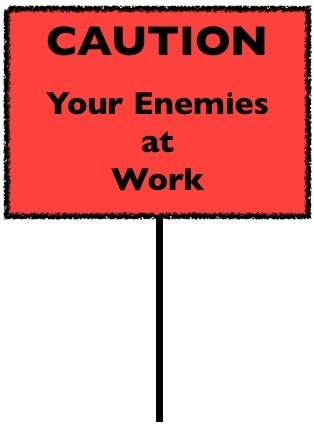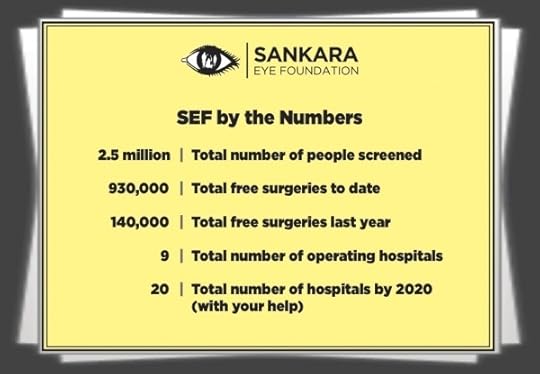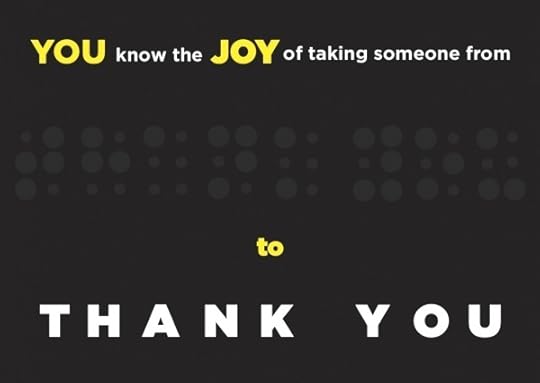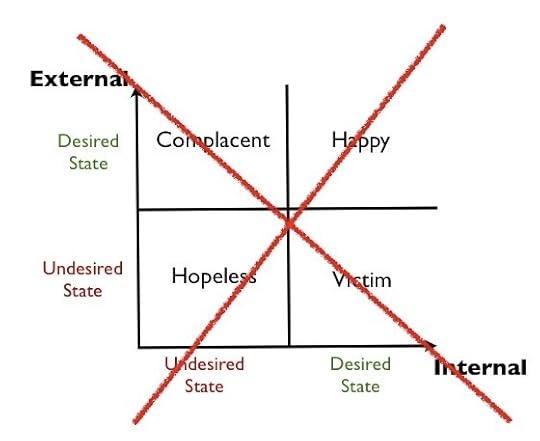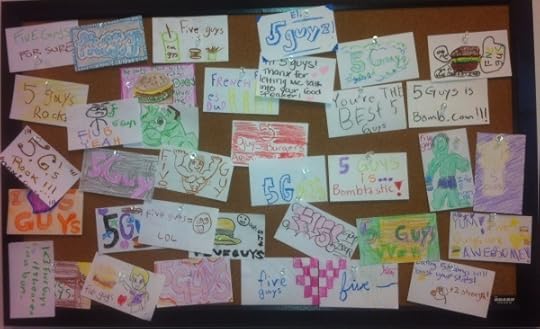Rajesh Setty's Blog, page 10
December 28, 2012
17-Point Program to Have the Best Year of Your Life

Happy New Year
2013 is days away. Here is a 17-point program to make it your best year.
1. Get paid to move the needle:
Quit thinking that you need to get paid for the hours you put into anything. If you get paid to move the needle, it will turn out to be a no-brainer value exchange.
2. Up your caring quotient:
Instead of trying to reduce the cost of the sale, increase your level of caring. It has the same effect in general.
3. Focus on ROII:
If you provide a solid return on investment for every interaction with you, you will be surely in demand. You can watch a short video on this topic here.
4. Never confuse entertainment for education or engagement:
Most of your activities in the social networks you belong to will fall under entertainment unless you think through your interactions well before hand.
5. Never confuse engagement with enrichment:
Enrichment is about enhancing the meaning for you and the people around you. You can engage all you want but not all engagement will lead to enrichment.Your focus has to be on enrichment.
[ Download a one pager on Enrichment here ]
6. Become someone that is hard to ignore:
If you bring something really relevant AND valuable compared to available alternatives, it will cost them more to ignore you than it costs to engage with you. Now, how do you get to this state? By relentlessly investing in yourself way more than what your peers are investing.
7. Acquire the right kind of power:
Power is an often mis-used word. If you have the right kind of power, you can make a meaningful difference in the lives of people you touch. The real indicator of how much power you have is to observe the stakes associated with requests for help that come your way. In general, higher the stakes, higher your power.
8. Invest in learning to be mindful:
Awareness is the beginning of all learning AND mindfulness teaches you to be more aware.
9. Don’t blindly hate stress:
Everybody takes the bad effects of stress. But not all stress is bad. As my friend Jnan Dash says, stress is directly proportional to the gap between “who you say you are to the world” and “who you are.” If your aspirations are noble and the gap is healthy, the resulting stress will be good for you.
10. Pursue true capacity expansion projects even at a loss:
I recently got into a project that will be considered a loss-making project by any standards. But the 30+ people I met through the course of the project inspired and expanded my capacity so much that I more than made up for the financial loss. In fact, if I had to spend that amount of money from my pocket, I could not have gained so much more capacity.
Do a quick mental math of what is the lifetime value (LTV) of the incremental capacity expansion and you can make a decision to pursue or abandon the project.
11. Remember that positive deviations amplify over long periods of time:
Establish a tiny habit and stick with it for ten years and you will see magic happen. Small, positive deviations may seem meaningless and trivial in the short-term but they are priceless in the long-term.
12. Master the art of having good conversations:
Conversations are your window to the external world. That is where you are melding your internal and external worlds. You learn from the world and world learns about you from the conversations. Conversations open new possibilities and if you get it wrong, it can close existing opportunities. There are so much good material on this but you can start here.
13. Learn to tell a good story:
Extending on the previous point, learning to tell a good story will take your conversations to a whole new level. As my teacher used to say, “Birds fly, fish swim and human beings tell stories.” To start you on that journey, here are 100+ mini sagas (a mini saga is a story told in exactly 50 words) OR, if you want a quick 5 minute overview on how to become a better storyteller, start here.
If you are curious to know how to tell a story using a simple thank you card, click here.
14. Save time and more by skipping News:
I must have spent close to 200 hours watching news or reading newspapers since 1997. You will rarely miss anything by skipping news as relevant news will reach you one way or the other.
15. Pay for good help:
It is good to look for a bargain but not when it comes to getting good help. Remember that people who can provide good help are constantly faced with requests for free advice, help, assistance. if you truly need their help, make it a point to make it worthwhile for them to help you.
16. Think!
This might sound insulting to many people but the world generally rewards only action so you end up taking action even when you have not through things. If you think that you “think well,” check your calendar right now and see how many hours you have blocked this coming week to “think.” If you are like most people, it will be ZERO. To get started, you can use “To Think Lists” – a habit that has created wonders for me.
17. Laugh more often:
Take your work super seriously but don’t take yourself seriously. Not only laughter is good for your health, you will be a welcome addition to any group if you burn that into your background thinking. If you are curious about the answer to the question – “What Makes You Happy,” click here.
Happy New Year to all of you.
PS: If you have not checked out the Metrics that Matter (for free) this might be a good time to take a look at it.







December 18, 2012
11 Silent Enemies that Wreck Havoc in Life
When you have enemies like these internally, you don’t need external enemies to wreck havoc
1. Fear of Failure
Every one has fears of failure but your degree of fear of failure will determine your degree of inaction on things that matter. It is not that you won’t take action if you have fear of failure but it is that you will miss treading the edges to make radical progress. [ Please see: Pushed to an edge ]
2. Fear of Rejection
Since people still can’t read your mind, you have no choice but to “ask” for something you want. Granted, you need to deserve it before you ask for it but the degree of fear of rejection will determine how much you will avoid asking even when you deserve something.
3. Indecision
The irony is that not deciding is making a decision to stay in an “undecided” state. It is a stalemate situation that generally leads to inaction again. Because it is a connected world and you are not living in an island alone, the effect of your indecision has (not so good) consequences for others in your network that have a stake in that matter.
4. Unable to Accept Reality
The common term for this is to live in your ivory tower thinking that it will all work out because it has to. In your mind, the universe has to take care of you or else why did it bring you into existence in the first place??? When you don’t accept reality, you will take actions that will work in “your imagination” but have very low probability of success in the real world.
5. Chronic Pessimistic Attitude
The glass is perennially half-full and there are always things that can go wrong with everything and everyone. Imagine embarking on any adventure with that mindset. Good luck to you and others in your life if you have chronic pessimistic attitude.
6. Extreme Positive Attitude
Extreme positive attitude is on the other end of the chronic pessimistic attitude. Extreme positive attitude has only one advantage – your life may be going to dogs but you are smiling all the way in that journey.
7. Hubris
Hubris is confidence gone awry. Unless you are surrounded by total dimwits (in which case you have a bigger problem) everyone around you know the difference between hubris and confidence and they CLEARLY know that you have the former. The real problem with hubris? Your promises are deeply discounted by others – meaning you will rarely get real support for your projects.
8. Lack of Gratitude
One reason people have (or show) lack of gratitude is to escape from the need to reciprocate. If you don’t acknowledge that you didn’t receive anything, then you don’t have to feel guilty that you didn’t reciprocate back. This is a cop-out strategy as the only outcome of this is that slowly (but steadily) you will stop receiving anything meaningful.
9. Lack of Self-Esteem
When you seriously lack self-esteem (this is almost the opposite of hubris) only a miracle can present you good opportunities. This is because when you don’t believe in yourself, it is hard for others to show that belief.
10. Unhealthy mood swings
Unhealthy mood swings not only result in inaction, they will also annoy people around you like crazy.
11. Recovery Latency
This is the mother of all enemies. if you are moving ahead in life, there is guaranteed to be bumps in the road and there will be times when you will fall. When there is too much recovery latency – you end up staying down for longer for every fall. Reduce the recovery latency and you will make rapid progress.
Note: The above is not an exhaustive list of silent enemies. I chose them as starters.







December 15, 2012
STIR again!
What could you do differently on “your” projects to produce better results in the next 12 months?
The keyword is “your” here. Your projects are those that you have chosen to embark on without external pressure for you to engage with them. Writing a book, starting and maintaining a yoga routine are a couple of examples.
Answer: Focus on STIR.
STIR = Short-term Invisible Results
Most people understand short-term and results. But “Invisible”???
Let me explain.
If the project you are embarking is significant enough, it is wise to assume that you will need to put in significant time, energy, mindshare and in some cases money. If the project is significant enough, you and I know that there is no concept of “overnight success.”
As you embark on the project, you will see intermediate results but rarely will those intermediate results be publicly visible. You can probably notice them but not the world – in other words, these are “invisible” results.
So, what you will see are “short-term invisible results” (STIR)
A series of such short-term invisible results is what will lead to real long-term results.
The formula is:
Long-Term Results = STIR + STIR + STIR + ….+ STIR
Take writing a book for example. The visible long-term result is a published book. But there has to be series of “short-term invisible results” throughout the project such as:
researching
writing drafts
editing
creating illustrations
completing the layout
planning for marketing
building your platform
building relationships with the ecosystem
and so on.
As you plan your projects, get very comfortable with STIR. There is nothing to show to the world but if you don’t chug along creating STIR along the way, you won’t have anything to show to the world ever.
All the best!







December 14, 2012
The Startup Glory Equation
Every now and then somebody will ask me what would be a super simple way to achieve startup glory? Not in the exact same terms but something that will lead towards that. I struggle with it because there are so many ways to succeed in a startup (depending on what the level of success is) and there are probably ten times that number of way to fail in a startup. The person who is asking also knows that but that hasn’t stopped him/her from asking for something simple.
While I know that there is no such startup glory equation that is FINAL and binding, here is an attempt at a starter version of “what could be” a startup glory equation
Startup Glory = Gut + Guts – Gutters
Gut
You need to start trusting more of it as there is no way to have ALL the data that is required to make a decision. In fact, you need to make a series of “reasonably informed” decisions throughout the life of a startup. This is true even if your startup is a copycat of an already existing startup as “your team” and “their team” and “your circumstances and “their circumstances” are quite different.
Guts
With the success rates of a typical startup being slim (less than 10% succeed) it is clear that you need a LOT of guts to embark on a startup journey. You will see the value of guts if you pose a question differently – “How open are you to take on a project if (put your money, bet your farm) if you knew that the failure rate for the project was 90% or more?” One has to be insane to get involved in a startup or in other words one has to have a LOT of guts.
Gutters
German military strategist Helmuth von Moltke said it right – “No battle plan survives the contact with the enemy.” It is the same story with a startup – everything is fine and dandy until you take your offering to potential customers who have to agree to pay for your offering. Chances are that you will move towards gutters more than once and throughout the life of a startup. Sometimes gutters are right in front of you with warning signs all over the place but STILL you end up in one of them. Sometimes well wishers warn you about these gutters and you STILL end up in one of them. The “trick” is to know when to persist and when to pivot. That comes with experience and a few battle scars.
All the best!







December 11, 2012
Metrics That Matter Most for 2013 (Free One Page PDF)
Note: I created this checklist a couple of years ago and it has served me well. No changes on the checklist except the dates. Please feel free to download, modify, re-use or share.
We are obsessed about measuring everything. We want to know the number o connections, number of followers, number of pageviews, number of minutes someone spends on our website, number of clickthroughs, number of times the shopping cart was abandoned, number of repeat visitors, number of new visitors.. and the list goes on.
Sometimes we forget that most of what we measure is means to an end and not the end itself.
Sometimes we forget that many things we should focus on cannot be measured with any scale (caring, love, joy, happiness, compassion etc.)
Sometimes we forget that we are in a rat race where everyone including the winner loses.
Sometimes we forget that we forget to see the forest for the trees. We want to improve on the metrics for the sake of improving on the metrics.
Sometimes we forget to measure the amount of time we spend being obsessed with measuring the metrics.
Measuring the wrong things is like running fast in the wrong direction.
End of the year is a great time to stop, reflect and think about what are the metrics that really matter most to you.
 I have created a ONE PAGE self-asessment checklist called “Metrics That Matter for 2013.” You can download it by clicking on image to the left or the download button below. No registration required. You are, of course, welcome to modify this by adding your own questions.
I have created a ONE PAGE self-asessment checklist called “Metrics That Matter for 2013.” You can download it by clicking on image to the left or the download button below. No registration required. You are, of course, welcome to modify this by adding your own questions.
Although it’s only one page and you can skim through that page in less than a minute, my request is not to rush through it. Reflect on each question for the last two years and make a promise to yourself about that number for 2012. Good luck with the exercise.
Bonus: Send this blog post or the PDF to one or more people that you care and help them create an year that they will remember for the rest of their lives.
Bonus 2: If you are in an organization and would like to explore a version that will suit the corporate world, please reach out to me (at Foresight Plus) to discuss further.
Photo Credit: Darren Hester at Flickr.







December 3, 2012
How to design a “touching” thank you card…
Question: First of all, what is the need to design a “touching” thank you card?
Answer: You will discover the answer as you read along…
At Foresight Plus, we have enjoyed working on really cool projects. This time, the project (pro bono project) was to create a Thank You card for one of my favorite charities Sankara Eye Foundation (SEF) for their annual outreach to more than 40,000 kind and generous donors.
The goal was simple – you need to create a card that stands out. There are dozens of cards during this season (Thanksgiving) an also ran card will just disappear into the background.
At Foresight Plus, we came up with our own new criteria:
a) The card has to tell a powerful story
b) The card has to bring an emotional appeal
c) The card should connect both to the head and to the heart
d) The card should serve as a social object – something that people will talk about
e) The card should be simple
We had twelve different iterations of how the card should look like and only the final one was able to satisfy all the criteria that we outlined for ourselves.
Here is the final outcome – we go from back to front.
Page 4 (Back of the card)
We kept this simple with stand out colors, name of the organization, website link and a QR code to keep up with the times.
Page 3 (Inside main page)
This is a call-to-action page for us. When someone opens the card, they will get to see how they can contribute and do their part to help one or more of SEF projects.
Page 2 (Inside top page)
This is the connection to the head – all the logic, rational and proof for why someone should support SEF. The card is titled SEF by the numbers because numbers provide solid proof for any rational mind. With more than 930,000 free eye surgeries so far, SEF is at the forefront of eradicating curable blindness.
Page 1 (Top of the card)
This is the main page – front of the card and this is the connection to the heart – the emotional appeal. The entire story was encapsulated in one single sentence
YOU know the JOY of taking someone from
< T H A N K Y O U – in Braille>
to
< T H A N K Y O U – in English>
The braille part was embossed so that created the “touching” part both literally and figuratively. We had to tell a story that is in-line with the theme of eradicating curable blindness. The design above achieved that while acknowledging the past and future contributions from the recipients (donors)
It took a couple of weeks to come up with the final version above. Murali (founder of SEF), Hema and Smita helped fine tune the concept and the content. Deepika and her team completed the design professionally and got 40,000+ cards printed and mailed well on time.
The verdict:
The card not only stood out of the crowd but told a story that connoted to the hearts and heads. Today, we are printing another stack of cards to be used at other events before the end of the year.







November 22, 2012
Setting up right
The punch line in a joke makes no sense if the setup was not powerful.
Here is an old joke that will demonstrate the power of setting up
8-year old Ron was telling his classmate John that he followed John’s advice to get five dollars from his Dad and it didn’t work. John couldn’t believe it and asked Ron to explain what happened. “Well,” Ron Said, “I went to my Dad and told him that I have been good for the whole of last week so I deserve a weekend gift of two dollars. He immediately said no. Based on your advice, I made another request and asked him that he should at least consider giving me five dollars then. That didn’t work either.”
John was banging his head – “It’s the order of the request, idiot.”
Ron obviously didn’t setup the sequence of requests.
Recently, I was visiting a gift store in Los Altos and there was a pillow cover that said, “Mr. Right” on it.
As I was smiling, I saw another pillow cover that said, “Mrs. Always Right”
The first pillow cover obviously was a brilliant setup for the punch line 
Whatever case you are making (pitching for funding, asking for a deal or just making an important decision) you need to learn the art of setting up. It takes time to get good at it but the investment will be worth it.







November 19, 2012
What makes you happy?
Think about this for a brief moment
What makes you happy?
This seems like a million dollar question.
Some of you may know the answer instantly and some of you may have to struggle with it for a while before you get a solid answer. I have asked this question to hundreds of people and the answers have varied from person to person.
Two Influencing Factors
If we try to de-construct, we might end up looking at two key influencing factors and they happen to be
a) External circumstances
b) Internal circumstances
In both cases, there is an undesired state and as you guessed it right – a desired state.
When both the internal and external circumstances are at a desired state, then it seems like one is happy.
Diametrically opposite to this is a place where both external and internal circumstances are in an undesired state leading to a hopeless state
When the external circumstances are at a desired state and the internal circumstances are at an undesired state, one has got work to do and probably one is complacent.
When the internal circumstances are at a desired state but the external circumstances are not, then, in general, one would feel victimized.
So, it seems like the quest has to be to very quickly get to a place where the external and internal circumstances are at a desired state.
Well, that would be wrong!
Honestly, the above question is a trap and choosing to answer the above question as is means that you have fallen into the trap. However logical the above explanation feels, the fact remains that in choosing to answer the question you have agreed to put “some conditions” for your happiness. Once you are on that path, you implicitly acknowledge that the default state for you is not to be happy.
Well, you can change that.
First step is to strike off the seemingly logical explanation completely.
It does not make sense.
Start here
When you put no conditions for happiness and acknowledge that by default you are happy, the world looks different. You might confuse the people around you because they are looking at the world from another angle where the default is to be unhappy and the quest for them is to reach the desired state in the external and internal circumstances. But we are not talking about pleasing everyone around you – so there is no need to worry about what others think of you especially when it comes to things like happiness and tranquility.
When your default state is happy and you see something beautiful, what should happen? Nothing – you will be “more happy.” The world IS different with this mindset.
Will things go wrong and knock you off from this state? Yes and that is life and you might go away from the state of happiness to anxiety or frustration but then again you are the one who will decide how long you will stay in those states of anxiety and frustration. You can stay there for minutes, hours, days or weeks. The choice is yours and it is a CHOICE.
To go one level deeper, there are internal circumstances and your internal responses to external circumstances. Your response (not reaction) to external circumstances is a choice. So, when it comes to something like happiness, you have TOTAL control as everything is internal.
What next?
My humble request is to stop and reflect on what you read for at least a minute before you click through and jump to the next big thing. After all, it is YOUR happiness and it is worth one more minute of your time. Then, think about ONE person that might benefit from reading this and send the link or copy/paste the text from here for them.
All the best!







October 27, 2012
3-Minute Ego Test
Do you have an ego problem?
Probably not.
But, take this 3-minute ego test and find out for yourself.
Read each one and give a point for every statement that you agree. If your score is three or more, you need to schedule a “general ego checkup” from someone that you trust soon.
1. By the time you read this sentence, you get a feeling that you pretty much know what this blog post will be all about (judging very quickly)
2. You read something and quickly look for situations where what you just read won’t be valid (proving others wrong rather than focusing on what you can learn)
3. When someone criticizes you, your immediate reaction is to find “some” fault with the other person rather than using this information to improve yourself (unable to accept fault)
4. You remember the criticism for a LONG time but tend to forget the learning from the criticism quickly (focusing on the wrong things)
5. You confuse hubris with confidence (unable to detect hubris )
6. You can logically prove that your failures are because of someone else but generally don’t over-analyze your successes because they are mostly the result of your smartness and hard work (mis-attribution of cause)
7. It’s hard for you to accept feedback from people who are not as “intelligent” as you ( extreme focus on the messenger )
[ Related reading: You are not qualified to criticize ]
8. You generally feel that your opinions are superior to those that are surrounding you ( over-rated self-concept )
9. You see a number of people in your circle who got “lucky.” (unable to recognize background effort )
And, the big one in the end…
10. Every now and then you feel that world has been unfair to you as all your efforts are not fully recognized ( perennial lack of recognition)
Bonus:
11. You are 100% convinced that YOU don’t have an ego problem (blind faith)
Wish you the very best!







October 15, 2012
How to get ridiculously cool testimonials
If you walk into a Five Guys restaurant, you might see a notice board. Instead of notices, they post some cool testimonials that are works of art from their young customers – probably created while the kids were waiting for food.
For instance, this was what I found in the Sunnyvale Five Guys location:
There are so many things right about this approach. Here are few that I can think of:
1. Social proof that kids love this place
Kids are taking time to create artwork-style testimonials to scream and say that they love Five Guys. For parents that should be good enough to come back again.
2. Triggers for other kids to create ridiculously cool testimonials.
Why not? Many kids will think they can do better than what’s on the notice board and they might be right. It benefits Five Guys, of course.
3. It costs pretty much nothing
To be fair, it costs some paper and some crayons and the ROI for that investment is huge, don’t you think?
What can you do in your business to get ridiculously cool testimonials?







Rajesh Setty's Blog
- Rajesh Setty's profile
- 6 followers


